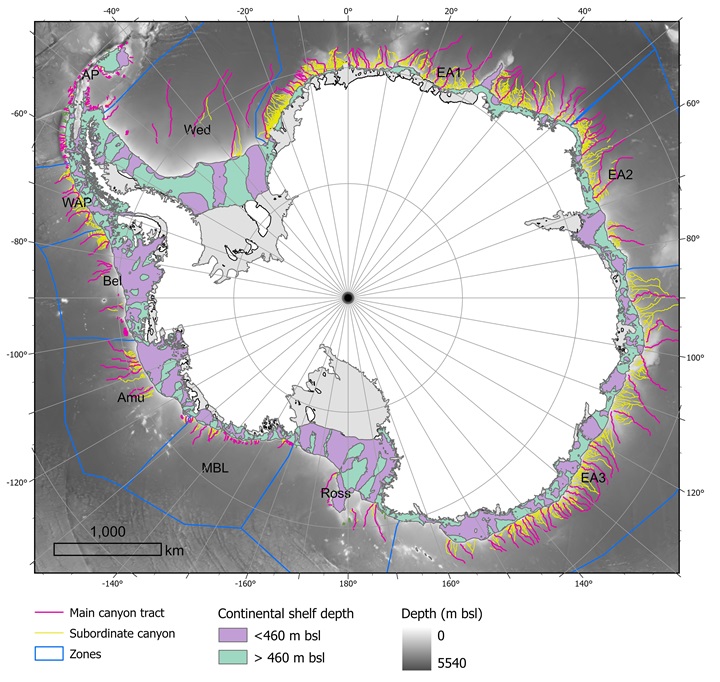Scientists have found over 300 underwater canyons that spread out from the continental margins of Antarctica, some of which plunge for over 4,000 (13,123 feet) meters into the abyss.
The rest of this article is behind a paywall. Please sign in or subscribe to access the full content.
Two researchers from University College Cork in Ireland and the University of Barcelona in Spain used new high-resolution bathymetric data to map the hidden canyons that lie off the coast of Antarctica. In total, they discovered 332 colossal submarine trenches – that’s five times more than previous studies had identified.
“Some of the submarine canyons we analyzed reach depths of over 4,000 meters,” David Amblàs, from the Consolidated Research Group on Marine Geosciences at the Faculty of Earth Sciences of the University of Barcelona, said in a statement.
“The most spectacular of these are in East Antarctica, which is characterized by complex, branching canyon systems. The systems often begin with multiple canyon heads near the edge of the continental shelf and converge into a single main channel that descends into the deep ocean, crossing the sharp, steep gradients of the continental slope,” he added.
The canyons on opposite sides of Antarctica tell very different stories. In the east, they are intricate and branching, with wide U-shaped profiles. In the west, they are shorter and steeper, cut into sharp V-shapes.
This observation, the researchers say, hints at the idea that the East Antarctic Ice Sheet is much older than its western counterpart and originated earlier.
“This had been suggested by sedimentary record studies, but it hadn’t yet been described in large-scale seafloor geomorphology,” said Amblàs.

A map from the new study showing the underwater canyons emanating from Antarctica
Antarctica isn’t a giant floating ice cube floating around the South Pole. Beneath its vast expanses of ice, there’s a rocky continent, just like North America or Europe, with a unique terrain of colossal canyons and mountain peaks. Just like Earth’s other continents, Antarctica’s hidden edges are etched with submarine canyons that spill into the sea like veins.
Understanding these underwater canyons is vitally important as they play an integral role in ocean circulation, plus they link shallow and deep waters, creating habitats rich in marine life.
Researchers have previously mapped 10,000 submarine canyons across the planet, but there’s likely to be tens of thousands more since less than one-third of the seafloor has been mapped with high precision.
“That’s why we must continue to gather high-resolution bathymetric data in unmapped areas that will surely reveal new canyons, collect observational data both in situ and via remote sensors and keep improving our climate models to better represent these processes and increase the reliability of projections on climate change impacts,” the researchers conclude.
The new study is published in the journal Marine Geology.
Source Link: Off Antarctica’s Coast, A Hidden Network Of Over 300 Submarine Canyons Has Been Found